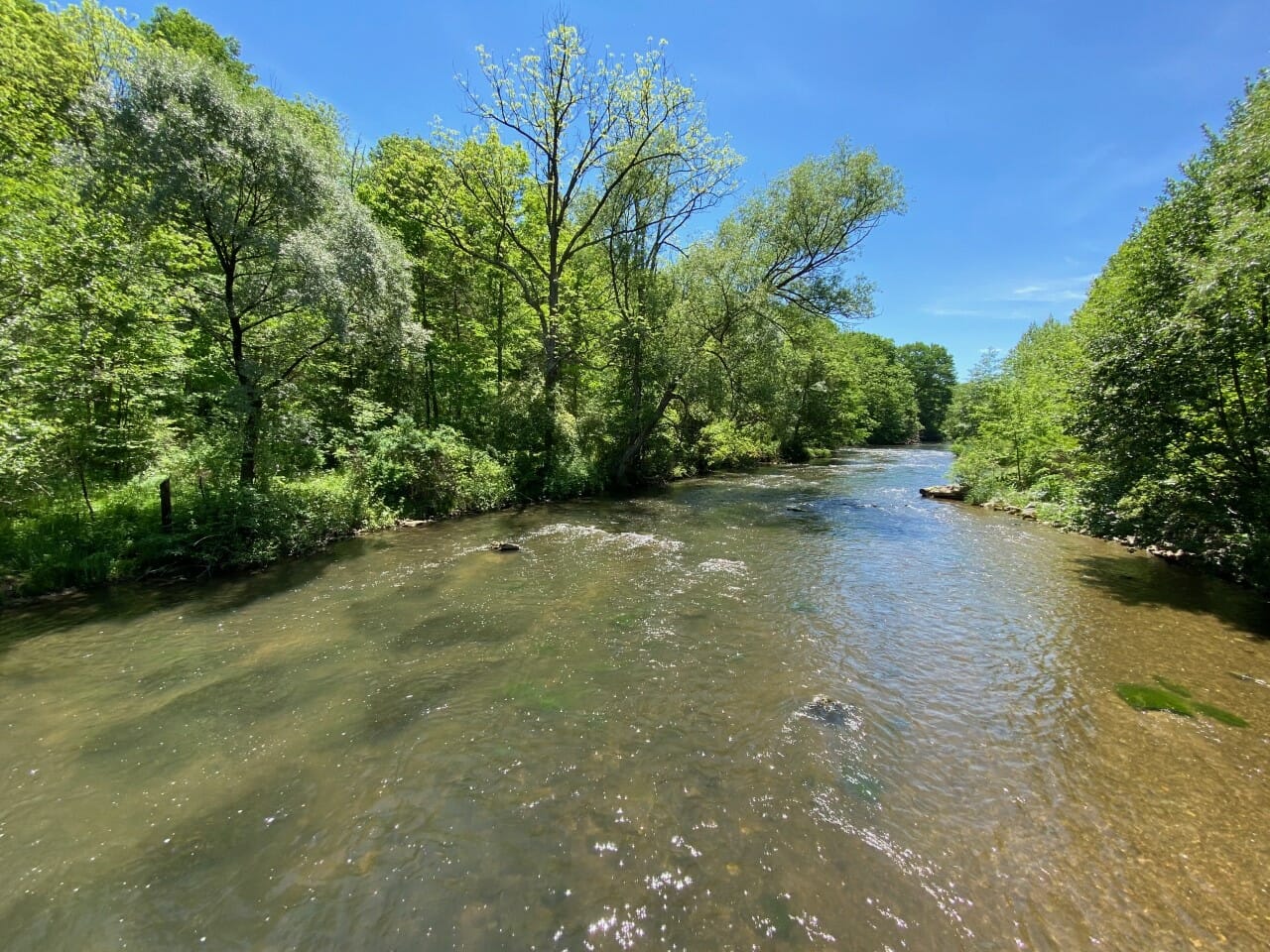The famous Spring Creek, Pennsylvania. Derek Eberly photo.
Beware the first-cast fish … it’s almost never a good omen
Many years ago, I was fishing on the Shenandoah with my friends Mike Dombeck and Bruce Babbitt, who had just stepped down as the director of the Bureau of Land Management and secretary of Interior, respectively. While they messed with their canoe at the put-in, I took a first cast into the middle of the river and hauled out a three-pound bass. It was my first, and last, fish of a long day of fishing.
I thought of that story last week on Spring Creek in north-central Pennsylvania. Rick Nyles, the entrepreneurial and energetic owner of Sky Blue Outfitters, invited me to fish with him and Dave Rothrock and other guests.
These are hallowed waters for fly fishing generally, and Trout Unlimited, specifically. At 92, the legendary Joe Humphreys still calls Spring Creek his home waters. I caught a wild brown trout on my first cast, and then waited about seven fishless hours—casting all the while—for the sun to move off the water to see if the sulfurs emerged. Unlike that day with Dombeck and Babbitt, I did connect with another trout. But much later.
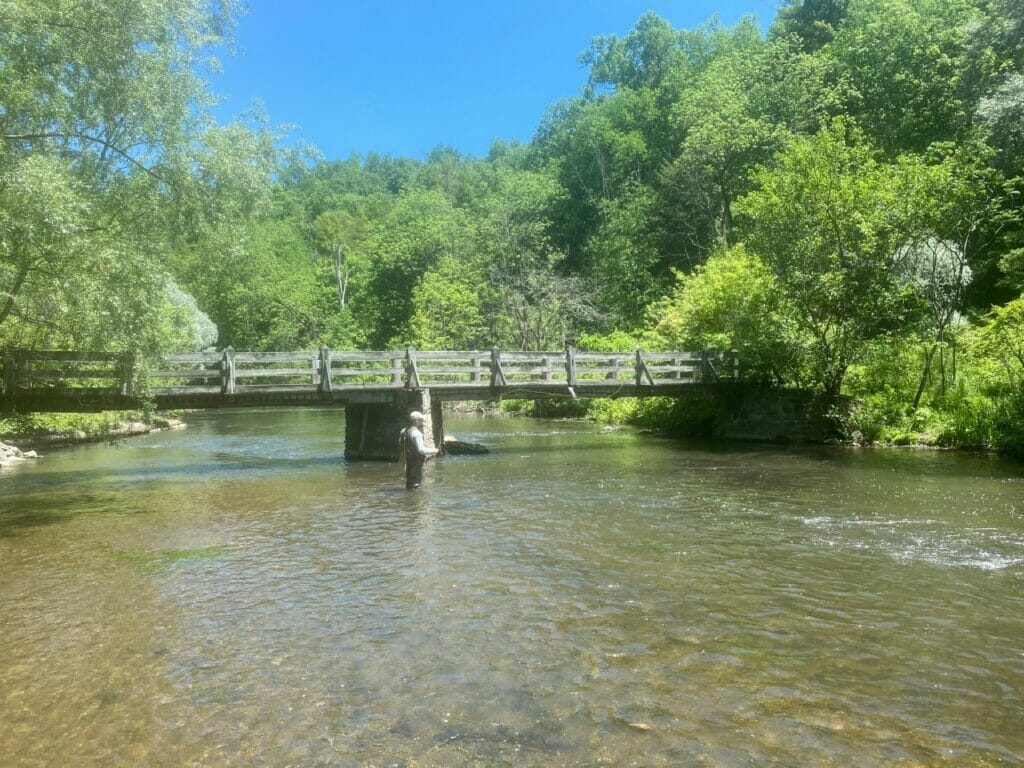
Rick’s business model at Sky Blue Outfitters is impressive. He leases a very cool old house in Amish country during the fishing season and takes groups of up to five anglers out to some of the legendary rivers in the area, such as Penns Creek and the Little Juniata. He cooks the meals, cleans the house, and maps out the next day’s fishing. Around midnight, he sends out a report on the fishing to over 1,000 subscribers. He is also a Gold Level TU Business Member. In fact, the purpose of this trip was to raise money for the Pennsylvania Council’s efforts to care for and recover wild trout.
The day heated up and we experienced that strange sensation of sweat on the brow while your feet are numb from the cold water. We were nymphing pocket water with short lines, and my guide, Dave Rothrock, showed me how to stop my cast while keeping my rod in the air, in order to minimize drag. Dave is a TU classic. He has served as chapter president, chapter officer, vice chair of the state council, and council chair. He is never shy to volunteer his time to (and opinions on) various wild trout efforts across Pennsylvania. Dave is a master caster and an angler of some repute, but it is his contributions as a volunteer that set him apart.
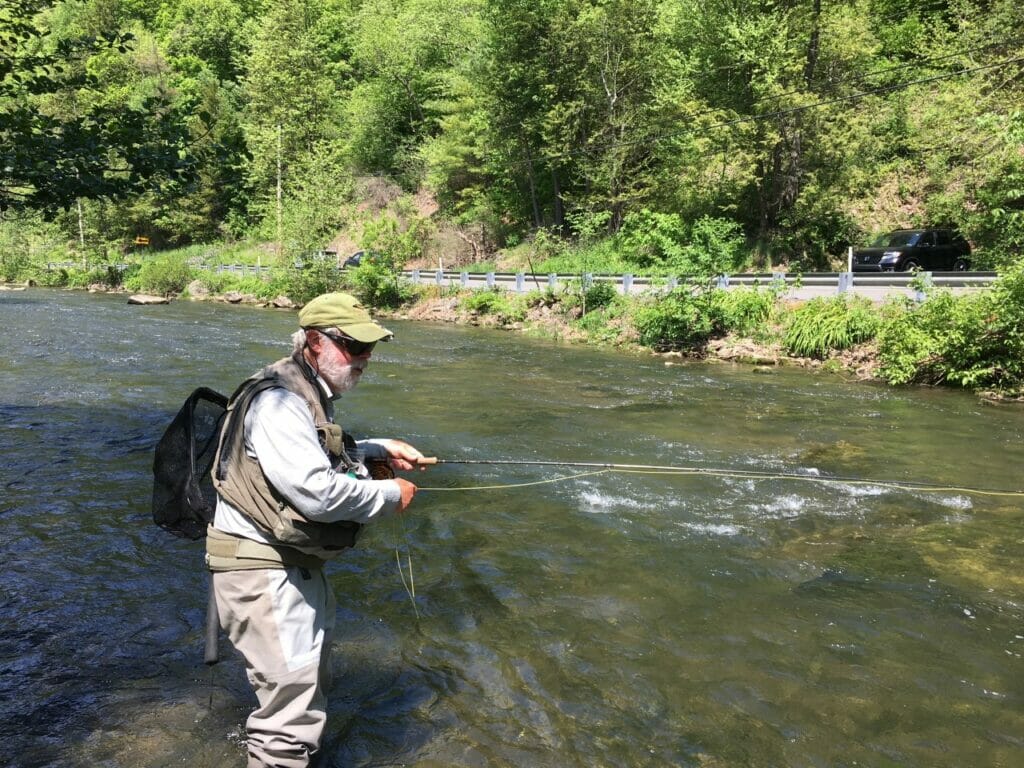
“Over the years, I’ve tried to make good on my belief that I need to give back to the resource that provides me so much opportunity,” Dave says. “It is only by so doing that we have the quality trout fishing that so many of us hold so dear. Unless we see more young people taking an interest in fishing, to the point of being willing to speak up and take action when needed, the future of our traditions is in jeopardy.”
Soon after my first (and only, for a long while) trout, Rick’s client, Stan, who made the donation to support TU’s wild trout work in Pennsylvania, hooked into a big brown. I blundered down the stream to capture the moment on camera. As I got into position the darned fish came off. Stan was gracious about the missed fish, and through persistence and able guiding by Rick, eventually pulled a few trout of a nice hole.
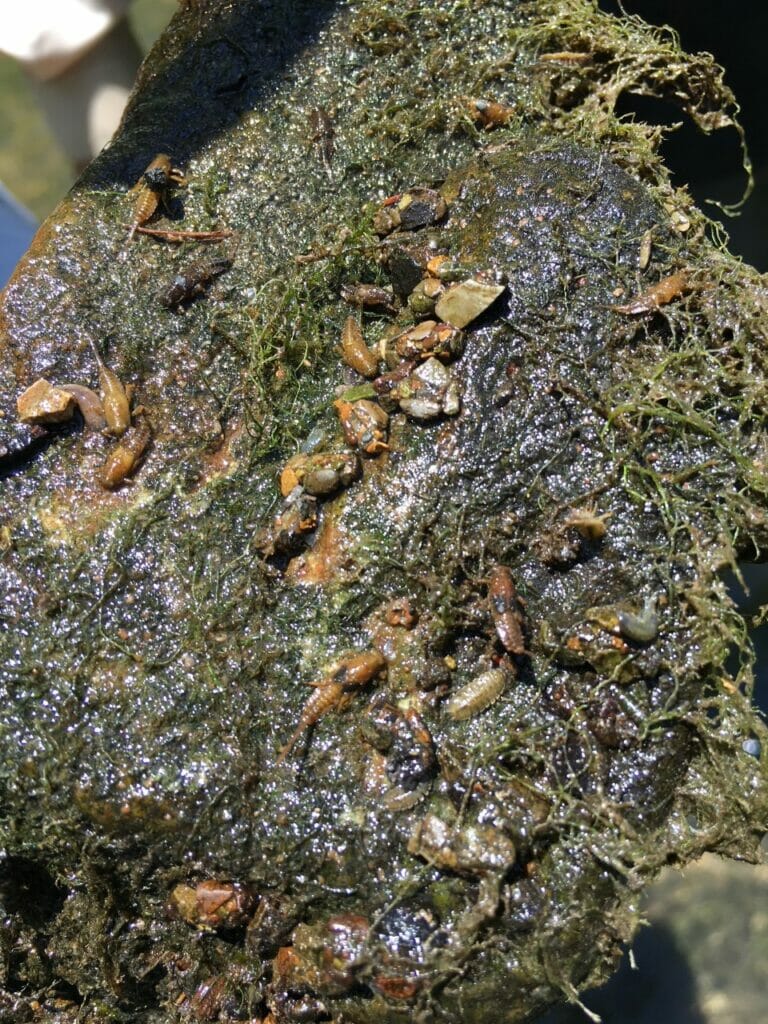
Greg Malaska joined the fun and fished on his own in the morning. Greg is the volunteer council chair for Trout Unlimited in Pennsylvania. In the several years that he has served as council chair, Greg has visited every single chapter in the Commonwealth of Pennsylvania. Did I mention that Pennsylvania has a whopping 49 chapters?
Greg joined Dave and me as we traveled to another stretch of Spring Creek to see if the famous sulfur hatch would come off at dark. The “sulfur” is an orangish-yellow mayfly. They emerge from late May to June, and when they do, the river lights up. As the sun fell behind the trees, we could see trout splashing and rising to eat caddis on the surface.
“Over the years, I’ve tried to make good on my belief that I need to give back to the resource that provides me so much opportunity.”
Dave Rothrock
Dave and I walked downstream, and left Greg to a few rising fish. Dave looked at the rise forms of the trout, and determined they were spinners—sulfurs that land on the water after mating to deposit their eggs. The fishing was fast and furious. Wild browns rose and greedily to hit the spinner. It was so dark, I was lifting my rod tip at a rise close to where I thought my fly lay on the water. A dozen or so trout later, we stopped, met Greg, and walked back to the car.
Interestingly, Greg had cleaned up fishing a “dun” variation of the sulfur. Duns are simply another life-phase of the mayfly, where the bug sheds its exoskeleton.
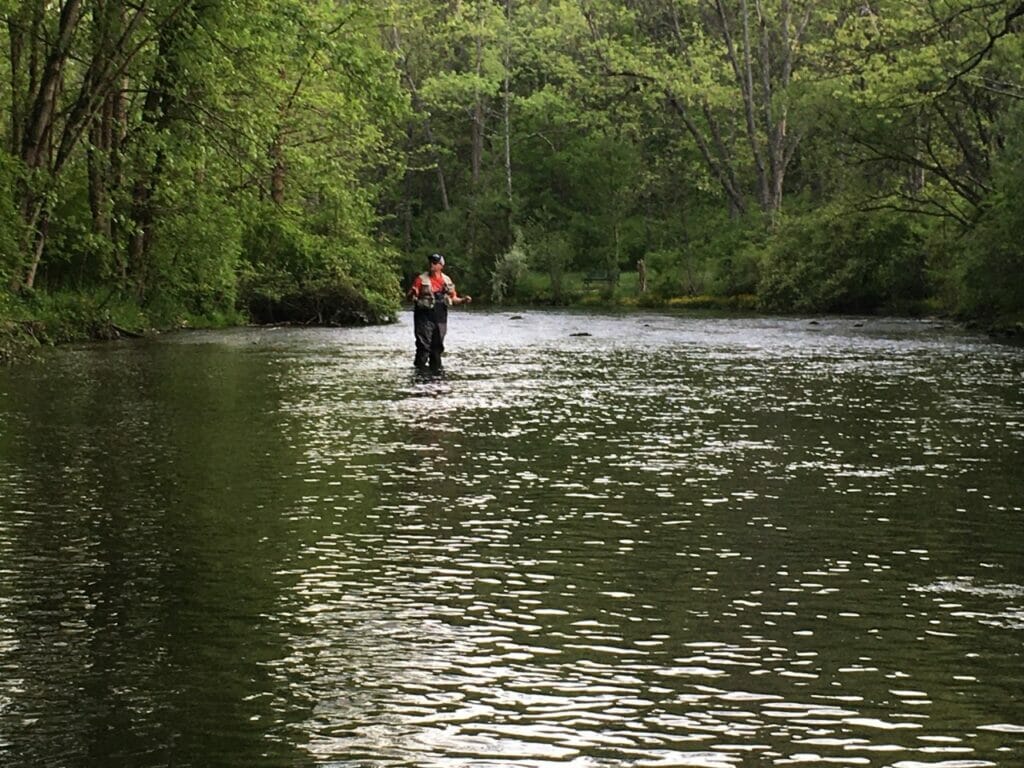
We stumbled in the dark and ate dinner around 10pm. The next day, Greg wrote to me:
“We definitely have the most diverse trout fishery in America. Whether it’s the best will need to be decided over a cocktail with the folks from Big Sky Country. Spring Creek is an incredible fishery. Fly anglers wait all year for the sulfurs and I was glad to see you experience them first-hand.
“Now … just think about all the great streams we have that you haven’t heard of?
“When local anglers and conservationists care about what’s around them, good things happen. Teddy Roosevelt couldn’t have said it better: ‘Do what you can, with what you have, where you are.’ From the Philly suburbs, to the anthracite and bituminous coal fields, to the southern farms, to the northern forests, we have over 15,000 members ready to take care of business back home.”
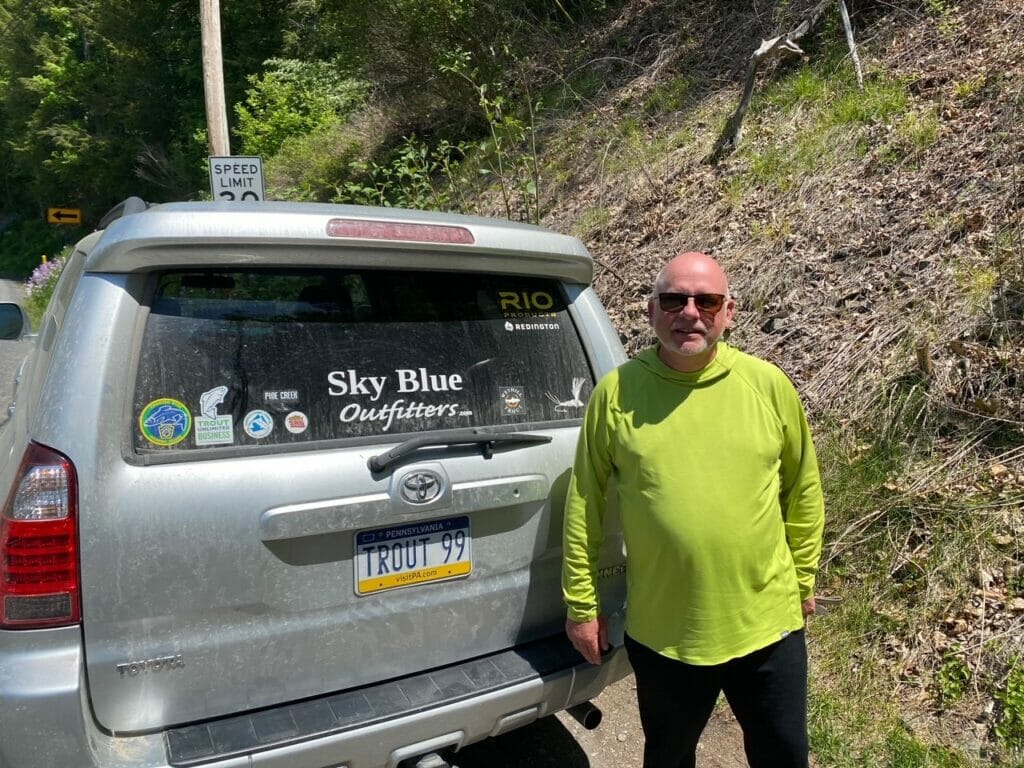
As I drove back to D.C., I marveled at the people who make Trout Unlimited so exceptional. An outfitter who donates his earnings to support the cause. A client willing to pay above the regular price of a trip so he can support wild trout. A guide determined to give back to the resource that gives him such joy. And a volunteer with a young family who travels to 49 chapters to preach the gospel of conservation.
I don’t really know if the spinners or the duns were the better call that evening, but I left Spring Creek with a deeper appreciation for all of those that give so much to the rivers and streams we love.



